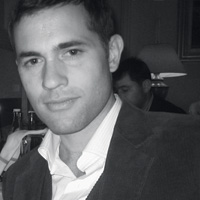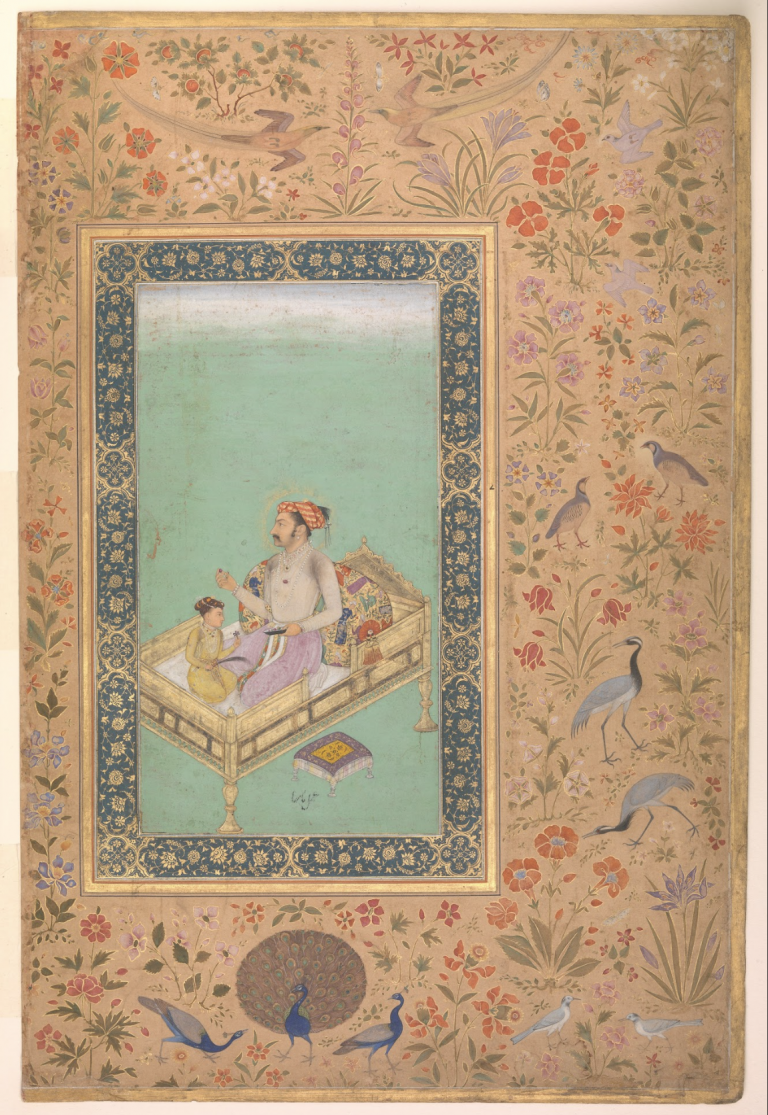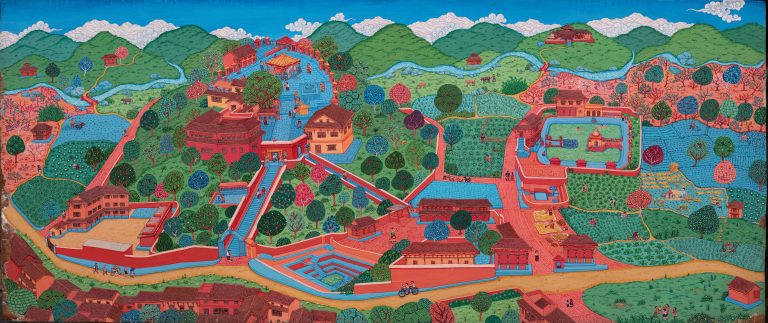
Seher Shah works with an occult visual physics, with force fields. Indeed, some of the artist’s best work is abstract and visionary, somewhere between Zaha Hadid’s post-Constructivist geometrical fantasia and the formal and mysterious line-making mysticism of Nasreen Mohamedi. In Progression I (2006), the artist uses the simplest materials – graphite and paper – to create a highly precise mathematical sci-fi dreamscape, exploding in bold against constraining graph-paper boxes of evanescent grey pencil that refuse us an unmediated viewing, and keep us at a remove. This is an image that one would expect to see realized on a computer screen; the ghostly presence of the graph paper lines, fading in and out like a pencilled fabric, subvert that expectation and restore the aura of the analogue to an otherwise digital dream.

In Interior Courtyard II (2007), these shaded, interior spaces of the self become a set for a cosmic theatre, for an icono-clash of symbols and signs, where collisions between hard-edged utopian geometries, densely coded symbolic forms, hot gases and dark currents of graphite manifest, fracture and dissolve. The colonnaded tomb’s cool marble shatters into spinning fireballs and burning clouds, its atmosphere of stillness, absence and death interrupted by cubes and crosses and lava bombs. The certainties of the architect’s drafting table sit in uncomfortable proximity to heaving, hand-drawn honeycomb topographies that mimic and hyperbolically extend the draughtsman’s reasoned principles of repetition and repeatability – and challenge the representational regime of visibility, measurement and perspective that they encode. The architectural forms – the artist’s own architectural training – enter upon the interior courtyard, adding structure and light to its tenebrous swirl of colliding broken patterns, but they ultimately fail to complete and stabilise the process of its construction, instead finding themselves stripped of their own implied gravity, afloat in turbulent currents of memory, irrational darkness and script, the tables turned, become content not form.

Cubes and crosses work a more public voodoo in the Concrete Oracles series (2008), a set of eight prints where tombs and obelisks cast long black shadows over tiny passers-by in the darkly utopian urban spaces of an unidentifiable colonial capital. A recurring image from that series is the perforated screen, containing space and giving shape to vision with a simultaneous gesture of exposure and concealment. The intense chiaroscuro and surreally long and opaque pitch-black shadows of the superhuman public squares, triumphal boulevards and marching grounds of these monumental landscapes work according to much the same logic, revealing and refusing the panoptical, white-light visibility that modernity demands as the condition for its totalising efficacy – the surgeon’s unshadowed operating room, the interrogator’s torture chamber, the viceroy’s prison – Shah instead figures the unstable relation between self and state, between the private and the public, as a mausoleum interior, bookended and symmetrical, unfolding with a patterned precision; Shah shows us not the coffin, but the cenotaph of the absent ruler, hollow and public. Some weird dark energy emanates from the black cube at the centre, some nullity.

Her The Expansion Complex of the First Great Ornamental Age series (2009) continues this darkening display of public worlds, of shared imaginaries built around interchangeable images of soldiers, business partners, and cityscapes, where the turbulent and private theological passions brewing in interior courtyards are barely visible, patrolled and kept in check – for now – by superior firepower, if not hegemony. The Horned God (2009) presents an altered scene from the archive: colonial soldiers’ line up for inspection beneath a huge blank sky, as a Janus-like mirrored pair of officers looks on with a salute. An obelisk crowned with a horned orb towers behind and above them all, like a malevolent wizard’s wand, pulsating with self-similar digital swirls and emitting a cone of black electricity at a heaven stripped of gods.














